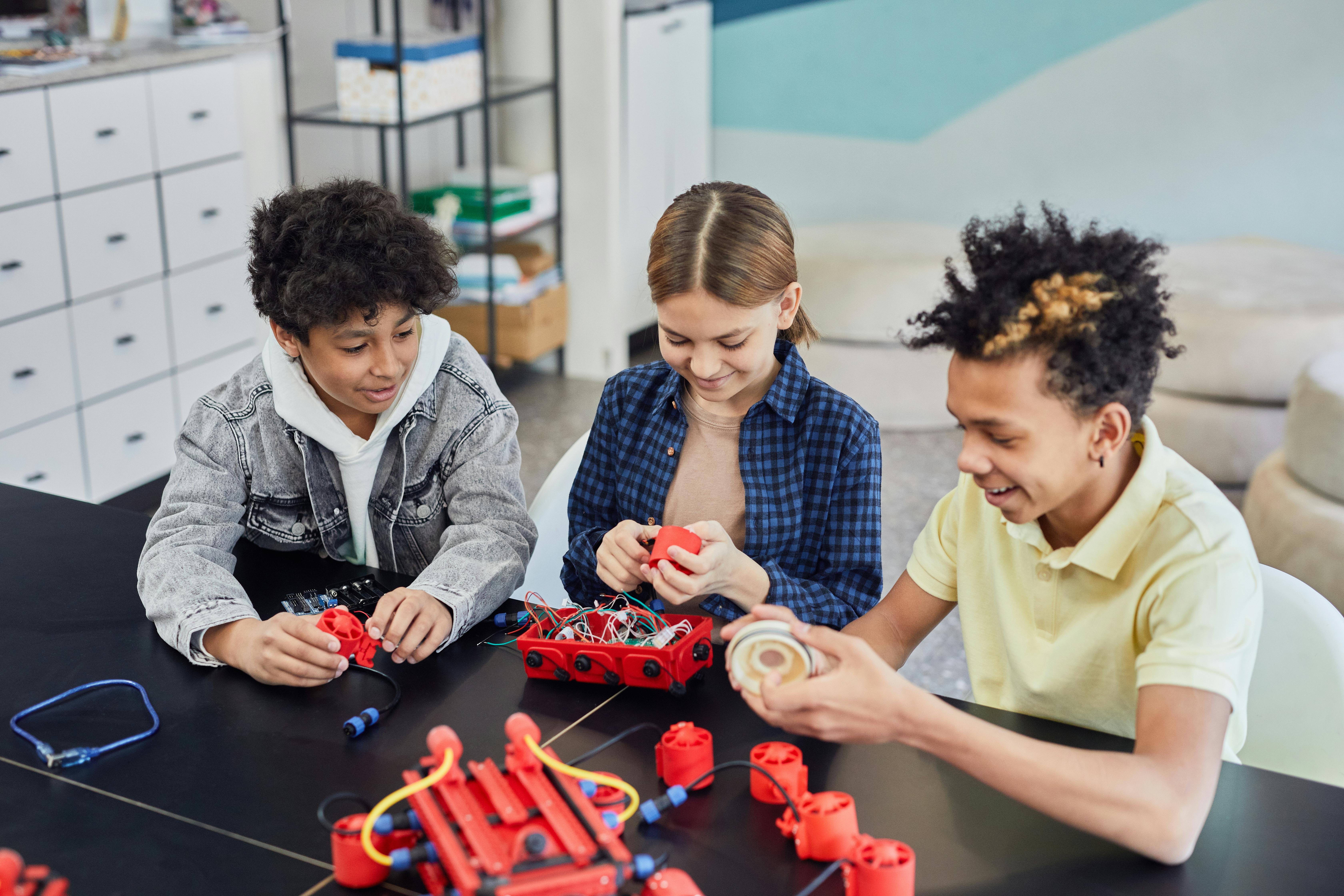How Implementing Coding, STEM, and Robotics Early Can Benefit Students
Helping students understand how to adapt to a digital environment can set them up for success later on in life.

Helping students understand how to adapt to a digital environment can set them up for success later on in life. Sandi Castro, Director of Information Systems & Applications at Del Valle Independent School District in Texas, leads us through her process of introducing digital design, coding, and robotics into the classroom.
Having an early education in how to use technology can be beneficial for young students being introduced to STEM. Castro’s early experiences with educational technology influenced her philosophy on teaching students about digital design, coding, and robotics.
“I started off as an early childhood education teacher, Pre-K, so I learned a lot about theories of human development and learning acquisition, which I’ve carried with me through my entire career as an educator,” Castro says. “In 2014 I was a first-grade teacher and I received an education grant from the school district. I purchased four iPads and two dash and dot robots. I took those into my first-grade classroom. I still have those robots. They’re very durable. I started with the basics to show the kids the exciting things the robot could do. Then I only allowed them to use Blockly, so they were using the drag-and-drop programming.”
How did the younger students adapt to using the programming platform?
“I had beginning readers and I noticed that they were using first letter inferencing to figure it out,” she says. “They were using the color code of the Blockly code to figure out what they could do.”
Even at younger ages, students can find a way to interact with the tools they are using to explore their creativity. Robotics and programming can provide a great pathway toward higher forms of learning.
“Just Part Of The Day”
As a result of her interest, Castro’s district became one of the first to formally implement core STEM subjects into the early grades.
Tools and ideas to transform education. Sign up below.
“So we had a really cool director of instructional technology in our school district at the time. He asked me if I would be interested in applying for a job as an instructional technology specialist,” Castro recalls. “At the same time, I started doing after school LEGO robotics with fourth and fifth graders. So I was just connecting all the pieces and went into instructional technology. That was in 2016. At the time we went to an event and our school district was the only one there that was incorporating computer science, robotics, and digital design in the K-5 space, which was pretty exciting for us.”
Castro was able to use the post-pandemic shift of increased technology in the classroom and her own experiences to boost the district’s STEM and robotics offerings.
“I went to talk to our workforce development director at the time and I told him I had this experience and said I wanted to help – I had also been working with the high school robotics teacher and engineering teacher,” she says. “We got the high school robotics team to go to first robotics, the first year ever in the history of the school district. I talked to those kids and asked them what they were missing.”
Castro found that concepts such as coding and robotics didn’t have to be regulated to their secondary education classes. The subjects could be incorporated into other daily curriculums and become a regular routine for students and teachers.
“What I had observed was that we had this really great space in K-5 where they were getting all of these concepts, naturally incorporating them into regular lessons,” she says. “It’s not its own thing. It’s just part of the day.”
Engagement Still Wins The Day
Having a continued interest in computer science can help to keep students engaged throughout their educational careers, however, as Castro points out, not maintaining a high level of engagement can damage a students relationship with robotics, computer science, and engineering.
“Students would go to middle school, go to a tech apps class, and it would be a snooze fest,” she says. “When they went to high school they would have these really rad CTE classes where they have lost exposure to robotics, computer science, and engineering for three years unless they had self interest in it.”
Having a supportive community has also helped when implementing all these STEM-focused changes to the curriculum. Even though parents may not be the most tech-savvy, they still want to give their children the best education possible, and be part of the process.
“Over the pandemic we spent a lot of money on internet access for our families because we’re on the outskirts of Austin and there aren’t as many cell towers around,” Castro says. “We would have lunch meetings with parents where they could join the meeting online and we would share a screen and show them how to do different things with Classlink. Anything we needed to share, we put into Classlink and kids could access it from home.”
Sandi Castro found a wonderfully engaging way to keep students interested in computer science, robotics, and digital design, even for the younger generation. Through her dedication to her students, her district is able to thrive and keep students using their creativity in natural ways during their educational careers.
Tools that Sandi Castro Uses
- Wonder Workshop
- Terrapin
- Dell
- Apple
- ClassLink
- Blockly

Michael Millington is a senior staff writer for Tech & Learning. A writer and editor with over a decade of experience, his focus on bringing actionable information to those in need is the driving force behind his work. When not researching new advancements in technology, Michael likes to practice his Italian and train his dog Cyril.
